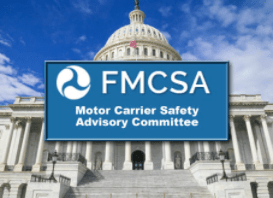July 2021 Newsletter
Drug and Alcohol Violations in 2021 Outpacing 2020 Numbers Through First Quarter
According to the FMCSA data collected through March, drug and alcohol violations are on pace to be higher than last year. 14,324 drug violations and 367 alcohol violations were reported in the first three months of 2021 compared to 54,776 drug violations and 1,185 alcohol violations throughout all of 2020. If the violations continue at this rate there will be significantly more than last year.
Marijuana is consistently the most used illegal substance among CDL holders with 37,261 positive marijuana tests. Jared Rosenthal, founder and CEO of drug consortium Health Street, stated a big reason for the high number of marijuana test-positives is the rapidly changing laws at the state level.
Drivers must complete the return-to-duty process before they can return to work behind the wheel. Of those 64,846 drivers in the return-to-duty process, only 10,609 have completed their return-to-duty test with negative results. The 54,237 drivers remaining have not started their return-to-duty process or were eligible to take their test and had not completed it yet.
A New Shortage is Impacting the Freight Market, and it has Nothing to do with Drivers

Motor Carrier Safety Advisory Committee Summit

FMCSA’s Motor Carrier Safety Advisory Committee held a two day summit this past week with industry stakeholders and regulators. This is the first MCSAC meeting including the Driver Subcommittee formed earlier this year adding real-world perspectives to the discussions. The day one conversation focused on driver recruitment and retention as an economic issue for the industry. Dr. Michael Belzer, a professor at Fort Wayne State University who has been studying the economics of trucking for over three decades, presented his research to the committee. Belzer found the main problem to be that drivers work long hours for low wages, especially when most don’t receive any compensation for nondriving parts of the jobs. Most truck drivers earn little or nothing for non-driving labor which accounts for about 25% of their work time. Belzer suggested that the U.S Departments of Labor and Transportation to work together in order to make changes that will result in drivers being fairly compensated for their nondriving work time. The issue now lies in how Labor Department and Federal Motor Carrier Administration define “work.”
Day two of the summit continued to highlight the issue of driver retention and providing a safe working environment. The discussion revolved around the conditions that drivers face including long hours, low pay, and lack of access to safe parking and healthy meals. Peter Kurdock, general counsel for Advocates for Highway Safety stated, “If people don’t feel safe at the workplace, no matter what job or occupation, they’re not going to stay there and the Department of Labor has consistently rated truck driving as one of the 10 most dangerous jobs. We’re losing far too many truck drivers every year.” Research shows that drivers are opting for jobs that have a more consistent schedule with predictable home time.

